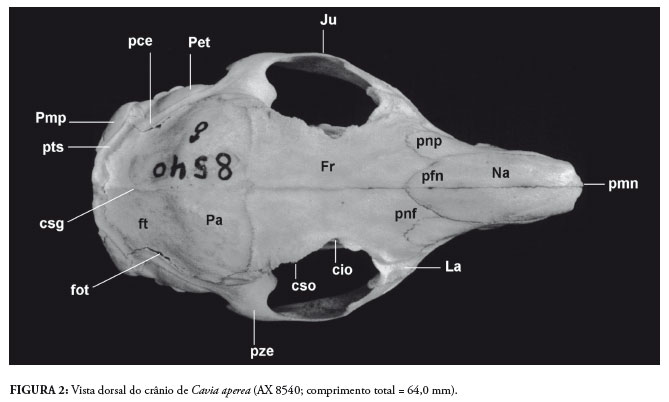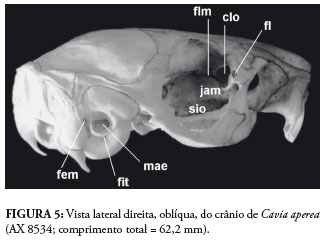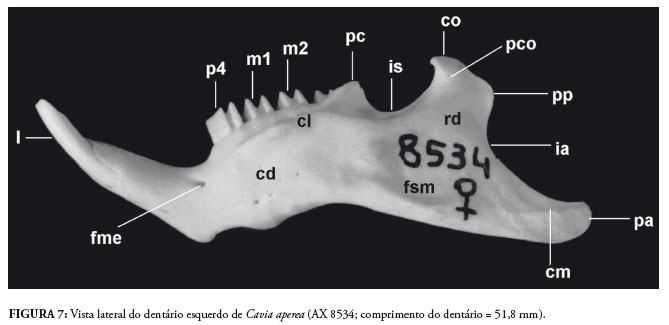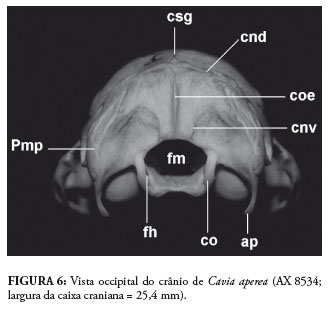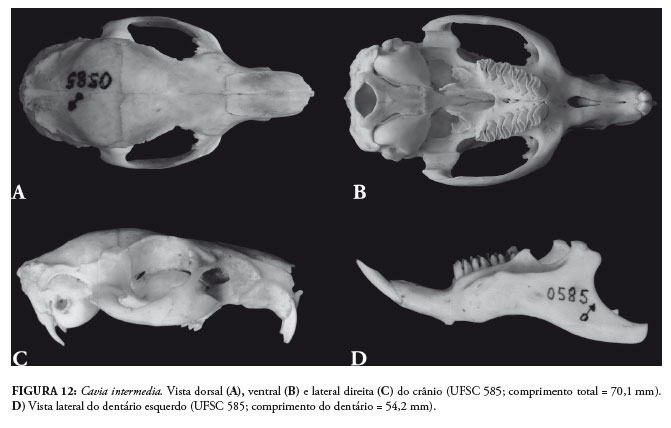The genus Cavia includes four species for Brazil, C.aperea (at least two subspecies, C.a.aperea and C.a.pamparum), C.magna, C.intermedia and C.fulgida. Aiming to contribute to the anatomy and to distinction of these species the syncranium (skull and mandible) of C.a.pamparum from Rio Grande do Sul State is described and compared with C.magna from Rio Grande do Sul and Santa Catarina States, C.intermedia from Moleques do Sul island on Santa Catarina's coast, and C.fulgida from Minas Gerais and Paraná States. Cavia aperea skull is lower and longer, with laterally compressed rostrum; marked interorbital constriction; elliptical orbit with broad communication with temporal fossa; broad and depressed infraorbital foramen; longer and lower mandible, with angular process not reflected laterally; dental formula 1I.0C.1P.3M; hypselodont teeth; molariforms formed for two prisms, the anterior laminar and the posterior cordiform. Cavia aperea distinguishes from C.magna by a less developed rostrum and ventral root of zygomatic process of maxilla; infraorbital foramen more depressed; posterior portion of dorsal surface of frontals and parietals less convex laterolaterally; paraoccipital apophysis shorter and more bent anteriorly; superior incisors narrower and generally opistodonts (proodonts in C.magna); external tertiary notch (fte) deeper with a thicker cement; anterior prolongation to fte more developed; and a constriction at the bottom of posterior prolongation. Cavia intermedia is distinguished by a shorter jugal; reduced/absent jugal fossa; more prominent depression in the interorbital region; larger sagittal crest; less marked lateral constriction in basisphenoid; wider magnum foramen; lower supraoccipital; fte less marked and its anterior prolongation little developed; the anterior prism of p4 as large as the posterior; anterior prism of m3 larger than posterior; shallow internal secondary notch in m3. Cavia fulgida differentiates by the smaller dimensions and a deeper fte. However southern Brazil specimens with these characters, but not typical coloration of C.fulgida, should belong to C.aperea. More studies are needed to clarify this issue.
Cavia; Anatomy; Skull; Mandible; Dentition



